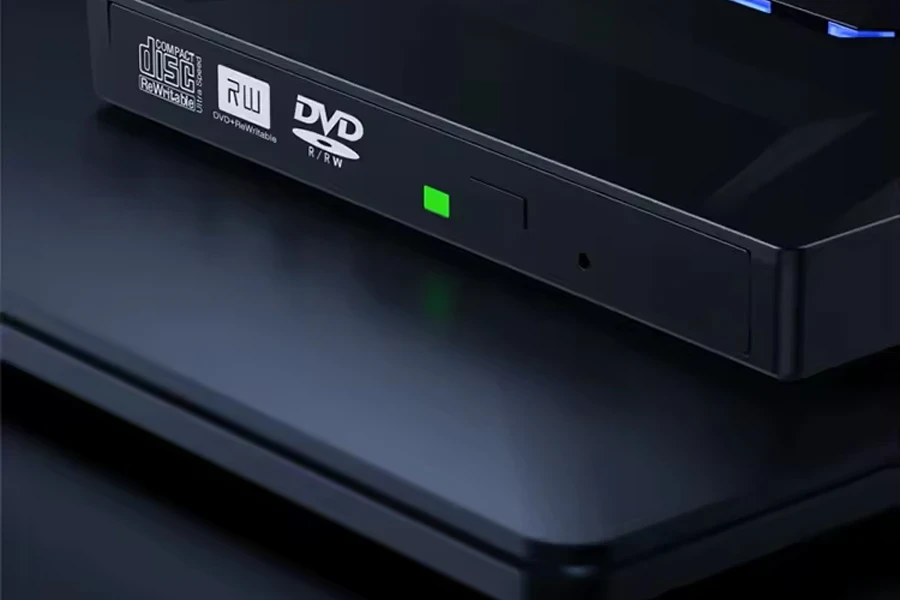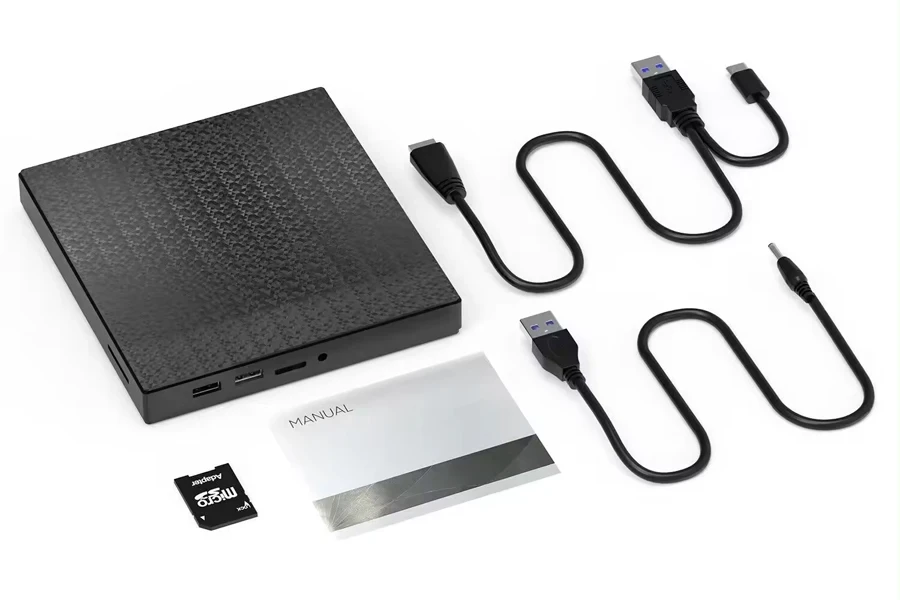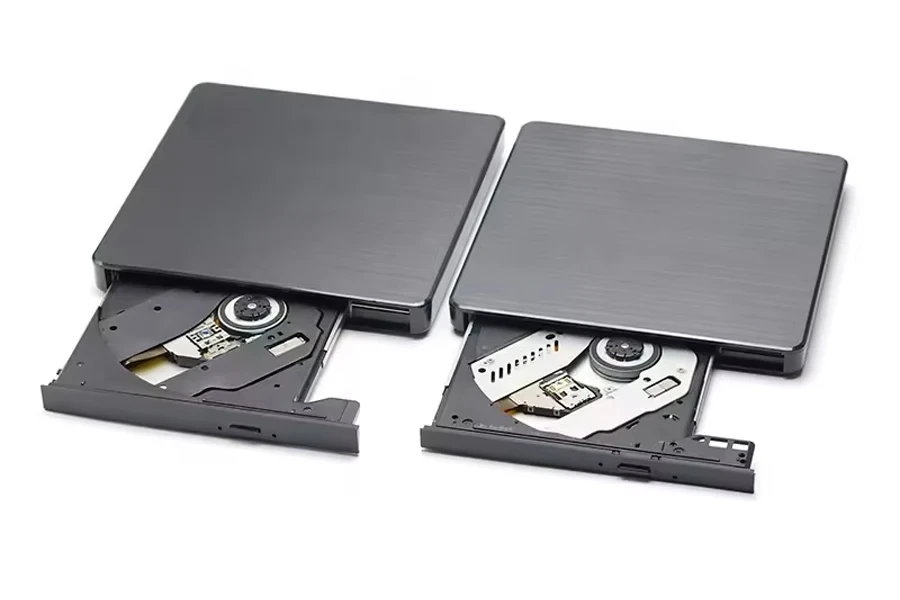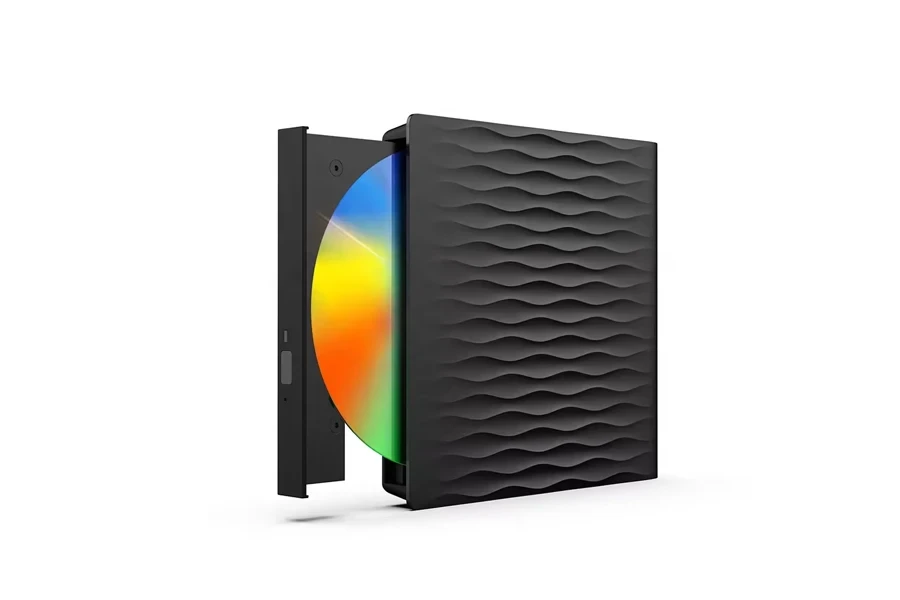In the landscape of modern technology, optical drives continue to hold a crucial role despite the surge in digital storage solutions. These devices, which encompass capabilities for reading and writing data across CD, DVD, and Blu-ray formats, offer a tangible solution for both media consumption and data backup. Especially in sectors where data integrity and longevity are paramount, the right optical drive can provide secure, reliable storage that enhances workflow and data management. As technology advances, these tools are not just surviving but evolving, offering enhanced features that support a wide array of professional applications.
Table of Contents
1. Decoding optical drive options
2. Snapshot of the 2024 optical drive landscape
3. Key considerations in optical drive selection
4. Spotlight on top optical drives
5. Conclusion
Decoding optical drive options

The array of optical drives available in the market extends from basic CD/DVD drives to sophisticated models capable of handling Blu-ray discs and M-Discs. Each type serves distinct purposes and offers varying levels of storage, speed, and data preservation capabilities. The traditional CD/DVD drives, once staples in every computer system, now often cater to specific tasks like music and standard video playback or data transfer at relatively modest speeds. In contrast, Blu-ray drives support high-definition video playback and substantial data storage, making them ideal for high-capacity tasks. Meanwhile, drives compatible with M-Disc technology are increasingly sought after in professional circles for their durability and long-term data archiving benefits, boasting a lifespan that can reach up to 1,000 years.
Spectrum of optical drives
The spectrum of optical drives on the market today is broad, encompassing everything from entry-level CD/DVD drives to advanced Blu-ray units that can read and write large volumes of data at high speeds. These drives not only differ in their physical media compatibility but also in their connectivity options, with newer models featuring USB 3.0 or even USB-C connections to facilitate faster data transfers. Additionally, some units are designed for portability, featuring slim profiles and external housings that allow users to easily carry them between different workstations or locations.
Practical applications
The practical applications of optical drives are diverse, spanning from simple data backups to complex professional uses. In sectors such as legal and medical industries, where document preservation is crucial, optical drives that support M-Disc technology offer a reliable solution for archiving essential records. Entertainment sectors also benefit from high-capacity Blu-ray drives that can deliver high-definition media content. Furthermore, with the growing trend of hybrid work environments, portable optical drives have become invaluable for professionals who frequently transition between office and remote work settings, needing reliable tools for data access and management on the go.
These technological tools, with their varied capacities and functionalities, continue to be integral components of many professional setups, proving that even in an increasingly digital world, the demand for robust physical storage solutions persists. Optical drives, with their capability to meet diverse and specific needs, remain relevant and vital in numerous tech-driven industries.
Snapshot of the 2024 optical drive landscape

The optical drive market in 2024 is marked by significant technological advancements and a shifting demand landscape that reflect both evolving technological capabilities and changing market needs. Innovations in the field have not only enhanced the fundamental capacities of these drives but also expanded their applicational horizons.
Experts currently value the satellite TV receiver market at approximately US$ million in 2024. The market is expected to undergo significant growth, with projections indicating a potential value by 2031. This growth reflects the evolving technology and increasing global demand for satellite TV services, emphasizing the market’s robust nature and its expansion potential over the coming years.
Innovation at the helm
Technological advancements in optical drive mechanisms have introduced capabilities that extend far beyond traditional data reading and writing. Recent developments have showcased optical drives with enhanced storage capacities and speeds, thanks to innovations such as three-dimensional data storage and the integration of nanoscale technologies. These technological strides are poised to redefine the scope of optical drives, turning them into pivotal tools for high-density data storage across various sectors. Notable among these advancements is the development of optical nanoscale disk memory with petabit-level capacity by extending recording architecture to three dimensions, as reported in recent studies. This breakthrough suggests a near future where data storage could reach exabit levels by stacking these disks into arrays.
Demand dynamics
The demand for optical drives in 2024 is influenced by a nuanced array of consumer preferences that emphasize not only increased capacity but also durability and data security. The market has seen a particular interest in optical drives capable of supporting long-term data archiving, a response to the growing need for secure and stable storage solutions in sectors like healthcare and legal services, where data integrity is critical. This trend is supported by the increasing adoption of M-Disc compatible drives, known for their longevity compared to traditional media. Moreover, the demand reflects a preference for drives that offer flexibility in terms of media types and connectivity options, catering to a user base that values both performance and convenience in their storage solutions.
These dynamics illustrate a landscape where optical drives remain highly relevant, driven by both innovation and a clear-eyed response to consumer demand. As these technologies continue to evolve, they are expected to play a crucial role in the data management strategies of numerous industries, further cementing the position of optical drives in the tech ecosystem.
Key considerations in optical drive selection

Selecting the right optical drive involves understanding several crucial factors that ensure the technology not only meets the current data management needs but also offers reliability and efficiency. These factors range from performance metrics like speed and efficiency, to broader concerns such as compatibility, connectivity, and durability.
Speed and efficiency metrics
Speed is a critical consideration when selecting an optical drive, as it directly impacts the efficiency of data transfer processes. Optical drives vary widely in their read and write speeds, with some modern drives capable of very high speeds that significantly reduce the time required for data operations. For example, Blu-ray drives offer faster write speeds compared to traditional DVD drives, making them suitable for high-volume data tasks. The choice of drive should align with the specific speed requirements of the business’s operations to ensure that data handling is not a bottleneck.
Ensuring compatibility and connectivity
Compatibility with various systems and platforms is paramount in choosing an optical drive. The drive must seamlessly integrate with the existing hardware and software environments without necessitating extensive modifications or upgrades. This compatibility extends to connectivity options; for instance, drives that support USB 3.0 or Thunderbolt connections offer faster data transfer rates, which are crucial for tasks involving large files. The choice of connectivity technology should consider the most common interfaces in the organization’s computer systems to facilitate easy integration.
Assessing build and endurance
The build quality and durability of an optical drive determine its longevity and reliability. Drives that are well-built can withstand frequent use and harsher physical conditions, which is particularly important for businesses that require robust data storage solutions. The materials used in the drive’s construction, its design, and its resistance to wear and tear are all important factors to consider. Additionally, the operational longevity of the drive, often indicated by the manufacturer’s warranty and the expected life span of the drive’s components, should meet or exceed the expected duration of its required use.
Each of these factors plays a significant role in the selection process, ensuring that the chosen optical drive not only meets immediate needs but also offers a reliable, long-term data storage solution. The integration of advanced technologies in newer models provides businesses with the tools necessary to manage and protect critical data efficiently and effectively.
Spotlight on top optical drives

In 2024, the optical drive market features a range of models that cater to both general and specialized needs, highlighting the importance of understanding their specifications and user benefits. Here, we detail some of the top models available and provide a comparative insight into how these drives stack up against one another.
Review of market leaders
Among the leaders in the optical drive industry is the ASUS BW-16D1X-U, known for its robust performance and broad compatibility. This drive excels with fast access times—160 ms for CD-ROM, 170 ms for DVD-ROM, and 180 ms for BD-ROM—and impressive read and write speeds, making it a top choice for professionals who require efficient large-volume data handling. Another standout model is the LG GP65NB60, praised for its portability and affordability while still offering reliable performance for CD and DVD media. It is particularly noted for its practicality for users who do not require Blu-ray capabilities. Additionally, the Verbatim 70102 emerges as a strong contender, especially for those seeking a durable and compact drive with support for M-Disc, ensuring long-lasting data storage. This drive’s solid metal case and comprehensive support for various disc types make it an excellent option for those on the go who need a dependable solution for reading and writing to optical media.
The ASUS BW-16D1X-U stands out with its high performance, capable of handling CDs, DVDs, and Blu-rays across various read and write speeds, peaking at 40x for CDs. Its robust design makes it larger and heavier, possibly noisier, and the included software may require troubleshooting, but its compatibility with both Windows and Mac alongside BDXL support for up to 128GB storage on a single disc marks it as a versatile choice for extensive media projects.
The LG GP65NB60 offers an affordable and portable solution for those needing basic CD and DVD read/write capabilities without the Blu-ray function. It’s praised for its light weight and compact size, which makes it highly portable, though it may have a cheaper build and a poorly designed eject function. Its USB connectivity supports both Windows and Mac, and it can burn archival-quality M-Discs, providing a practical option for on-the-go use with reliable performance.
For those requiring a compact yet robust optical drive, the Verbatim 70102 excels with its solid metal housing and support for M-Disc, ensuring durability and longevity of data storage. This drive is less than half a pound and provides high-speed data transfers over a single USB connection. While it doesn’t include software and isn’t the cheapest on the market, its build quality and the ability to write CDs at 24x, DVDs at 8x, and Blu-rays at 6x make it a formidable option for both personal and professional use.
Feature face-off
When comparing these models, several key features stand out. The ASUS BW-16D1X-U is unmatched in its performance capabilities, particularly suited for high-demand environments where speed and capacity are crucial. It supports BDXL formats, allowing up to 128GB on a single disc, which is beneficial for extensive data backup or large media files.
Conversely, the LG GP65NB60 offers a more budget-friendly solution without compromising much on functionality. Its streamlined design is perfect for professionals who need a lightweight, easy-to-carry device that provides basic media reading and writing capabilities without the need for external power sources.
The Verbatim 70102, while similar in compactness to the LG model, steps up in terms of build quality and durability. It is an ideal choice for those who travel frequently and require a rugged device that can handle the rigors of mobility.
These optical drives demonstrate the diversity of the market’s offerings in 2024, catering to a range of professional needs from high-speed, high-capacity requirements to portable and durable solutions for on-the-go users. Each model holds specific advantages that can help professionals streamline their work processes and ensure reliable data management.
Conclusion
The evolving landscape of optical drives in 2024 underscores their enduring relevance in a digitized world, adapting through advances in speed, capacity, and durability. For businesses, the strategic selection of these devices hinges on a keen understanding of market trends and consumer preferences, ensuring alignment with operational needs and market demands. The continued innovation in this sector suggests a robust future for optical drives, cementing their role in efficient and reliable data management and storage solutions across various industries.



